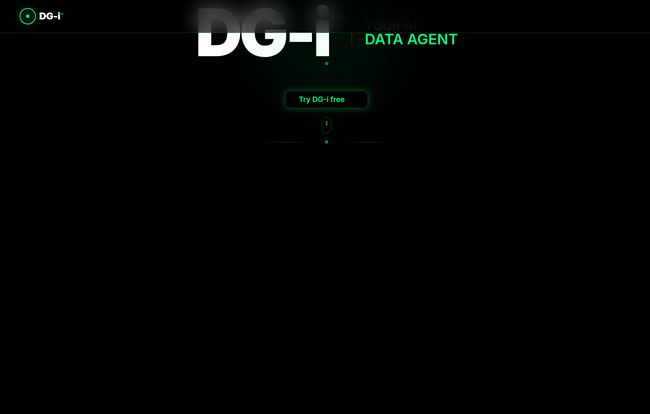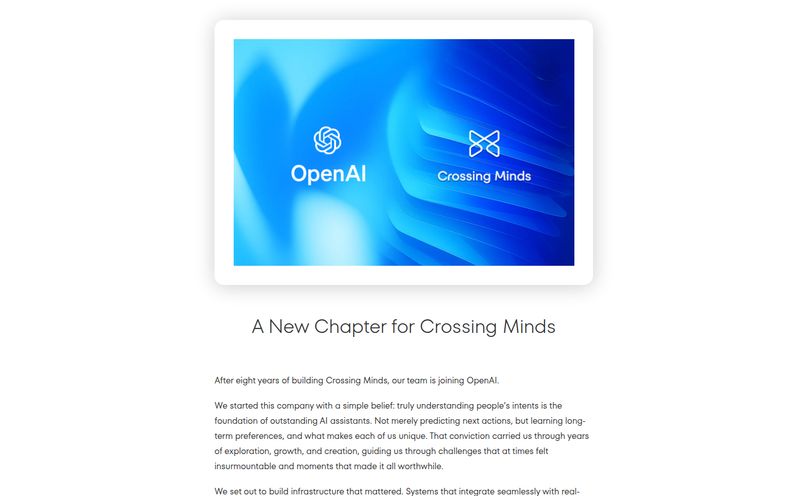For years, we’ve been told the same story about data. You need an ETL tool to pull it, a data warehouse to store it, a backend developer to build an API for it, and a frontend wizard to make it look pretty in a BI dashboard. It’s a whole parade of specialists, tools, and subscriptions. And frankly, it can be exhausting.
It’s a tech stack Jenga tower just waiting to collapse. I’ve spent more nights than I’d like to admit wrestling with a stubborn data pipeline, all for a simple chart on a weekly report.
So when I stumbled across a tool called DGi, which boldly claims to be an AI-powered data platform with no backend and no frontend, I did a double-take. Wait, what? Is that even possible? It sounds less like a SaaS product and more like something out of a sci-fi novel. Naturally, as a professional tinkerer and someone who lives and breathes this stuff, I had to see what was going on.
So, What on Earth is DGi?
DGi, which is powered by the team at Datagran, isn’t your typical data tool. The website itself is… minimalist. A black screen, a logo, and a call to action. It feels more like a secret club than a software platform. They call it a “Meta Programmable System Generator.”
Okay, let’s unpack that marketing-speak. My take? DGi isn’t a pre-built house like Tableau or a set of power tools like a traditional ETL service. It’s more like a genius AI architect and an invisible, instantaneous construction crew. You don’t buy a finished product; you describe what you want, and the AI literally builds the system to do it for you, on the fly. No backend code to manage, no frontend frameworks to update. Just you and a chat interface.

Visit DGi - Powered by Datagran
The core idea is that DGi acts as your personal “data agent.” You connect your data sources—your databases, your SaaS tools—and then you just… talk to it. You tell it to build workflows, run analyses, write code, or spin up a business intelligence dashboard. It’s a wild concept that tries to tear down the whole Jenga tower and replace it with a single, intelligent block.
Living the No-Backend Dream
The biggest mind-bender here is the “no backend, no frontend” philosophy. For anyone who’s ever been in a sprint planning meeting, this sounds like pure fantasy. You mean I don’t have to file a ticket with engineering and wait two weeks for an API endpoint just to see customer churn data? I can just… ask for it?
That’s the promise. The interface is dynamic, generated by the AI when you need it. Want a dashboard? The AI builds it. Need to schedule a data cleanup job? The AI sets it up. This completely changes the workflow from “building and maintaining” to “requesting and receiving.” Sounds like magic, and as an SEO who's seen a lot of 'magic' turn into smoke and mirrors, I was wary. But the potential here is undeniable.
The Core Powers of this Data Agent
After playing around with the concepts, a few key functions really stood out to me as game-changers, assuming they work as advertised.
Building Data Workflows by Chatting
This is the bread and butter. You can connect to your databases (Postgres, BigQuery, you name it) and start making requests. Things like, “Connect to the production database, join the users table with the orders table, filter for signups in the last 30 days, and output the result as a CSV.” It's less about dragging boxes and connecting nodes in a UI and more like having a conversation with a hyper-competent, infinitely patient data engineer who never needs a coffee break.
Instant BI Dashboards, Minus the Headache
This isn't just another dashboard tool. The difference is that DGi doesn’t just visualize data; it builds the entire pipeline and the visualization layer from a simple prompt. In theory, you could ask, “Create a dashboard showing monthly recurring revenue, active users, and customer acquisition cost over the past year.” The AI would not only query the data but also generate the charts and layout for you. The interface itself is ephemeral, created for your specific need. A massive departure from the rigid templates of traditional BI.
Automation on Autopilot
One of the most tedious parts of data work is babysitting recurring jobs. DGi aims to fix this with simple, conversational scheduling. “Run that sales report every Monday at 9 AM and email it to the leadership team.” Done. This turns a task that might require cron jobs or a separate automation tool into a simple, one-line request.
The Real Deal: Pros, Cons, and a Dose of Reality
Alright, let's get down to brass tacks. No tool is perfect, especially one this new and ambitious. Here's my honest breakdown.
"DGi feels like a glimpse into a future where the primary technical skill isn't coding, but clearly and creatively articulating what you want to an AI."
The most significant advantage is its sheer versatility. Having a single platform that can potentially handle data transformation, code generation, and BI is the holy grail for lean teams. For a startup or a solo founder, this could mean avoiding several hires and a half-dozen subscriptions. It’s a force multiplier.
But we have to talk about the other side of the coin. The creators are upfront that this is an experimental system. This isn't something you'd migrate your entire company's mission-critical reporting to on day one. It's for the pioneers, the early adopters who are comfortable with a few bumps in the road.
Another “con” that’s actually more of a paradigm shift is the reliance on AI prompting skills. If the system doesn't understand you, you get nothing. This moves the bottleneck from technical implementation to human communication. It seems prompt enginering is the new SQL—a skill of persuasion and clarity as much as pure logic. You need to learn to 'talk' to the machine effectively.
Finally, there's the big, flashing question mark: scalability and performance. The documentation and public information are sparse on this. Can DGi handle terabytes of data with the same speed as a finely tuned, custom-built stack? How does it perform under heavy load? These are the serious questions that need answering before it can move from a fascinating experiment to an enterprise-ready tool.
Who Should Give DGi a Shot?
So, who is this for, right now, in its current state? I don’t see the Fortune 500 giant with a 200-person data team ditching their Snowflake and Tableau setup just yet. But for others? It’s incredibly compelling.
- Startups and Small Businesses: Teams that need to be fast and nimble, and can't afford a dedicated data engineer, will find the all-in-one approach a lifesaver.
- Data Analysts & Citizen Developers: Anyone who knows what they want from the data but is constantly blocked by IT or engineering backlogs. DGi empowers them to build their own solutions.
- Marketing and Growth Teams: For ad-hoc campaign analysis and quick insights, the speed of DGi could be a competitive advantage.
- Fellow Tech Geeks: If you're like me and just love to see what's on the bleeding edge, you have to try this. It's a peek into what's next.
The Million-Dollar Question: DGi Pricing
And now for the question everyone asks about any new tool: what’s it going to cost me? As of this writing, DGi's pricing is a bit of a mystery. The site prominently features a “Try DGI Free” button, which suggests a free trial or a freemium model in the works. However, there's no public pricing page to be found.
This is pretty standard for a platform in an experimental phase. The focus is likely on gathering user feedback and proving the concept rather than immediate monetization. I’d speculate we might see a usage-based model (pay per query/job) or a tiered subscription down the line, but for now, you can get your hands on it without pulling out a credit card.
My Verdict: Is DGi the Future?
After digging in, I'm left cautiously optimistic. DGi is not just an iteration on an existing idea; it's a fundamental reimagining of how we interact with data systems. It feels less like a tool and more like a collaborator. It reminds me of how GitHub Copilot is changing software development—not by replacing developers, but by augmenting them.
Is it perfect? Absolutely not. Is it going to put all data engineers out of a job tomorrow? No. But it represents a powerful trend toward AI-native tools that abstract away immense complexity. The future of data work might involve a lot more English and a lot less SQL. DGi is one of the first, boldest steps I've seen in that direction.
I wouldn’t bet the farm on it today, but I am absolutely placing a small, excited wager on its potential. It's one to watch.
Frequently Asked Questions
- What is DGi in simple terms?
- DGi is an AI data agent. You use a chat interface to tell it what to do with your data—like build workflows, run analysis, or create BI dashboards—and the AI builds and runs the necessary systems for you without needing a traditional backend or frontend.
- Do I need to be a programmer to use DGi?
- No, you don't need to know how to code. However, you will need to develop good “prompting” skills—the ability to give the AI clear, precise instructions to get the results you want.
- Is DGi ready for large-scale enterprise use?
- As it's an experimental system, it's likely best suited for smaller-scale projects, prototyping, and ad-hoc analysis for now. Information on its ability to handle very large datasets is still limited.
- How is DGi different from a tool like Power BI or Tableau?
- Tools like Tableau and Power BI are primarily for data visualization—they are the final step. DGi aims to be the entire process. It handles the data connection, processing, and workflow automation as well as the creation of the final dashboard.
- Who is behind DGi?
- DGi is a product from the team at Datagran, a company known for working in the data and AI space.
- Is DGi free?
- DGi currently offers a free trial. There is no public pricing information available yet, which is common for new, experimental platforms.



